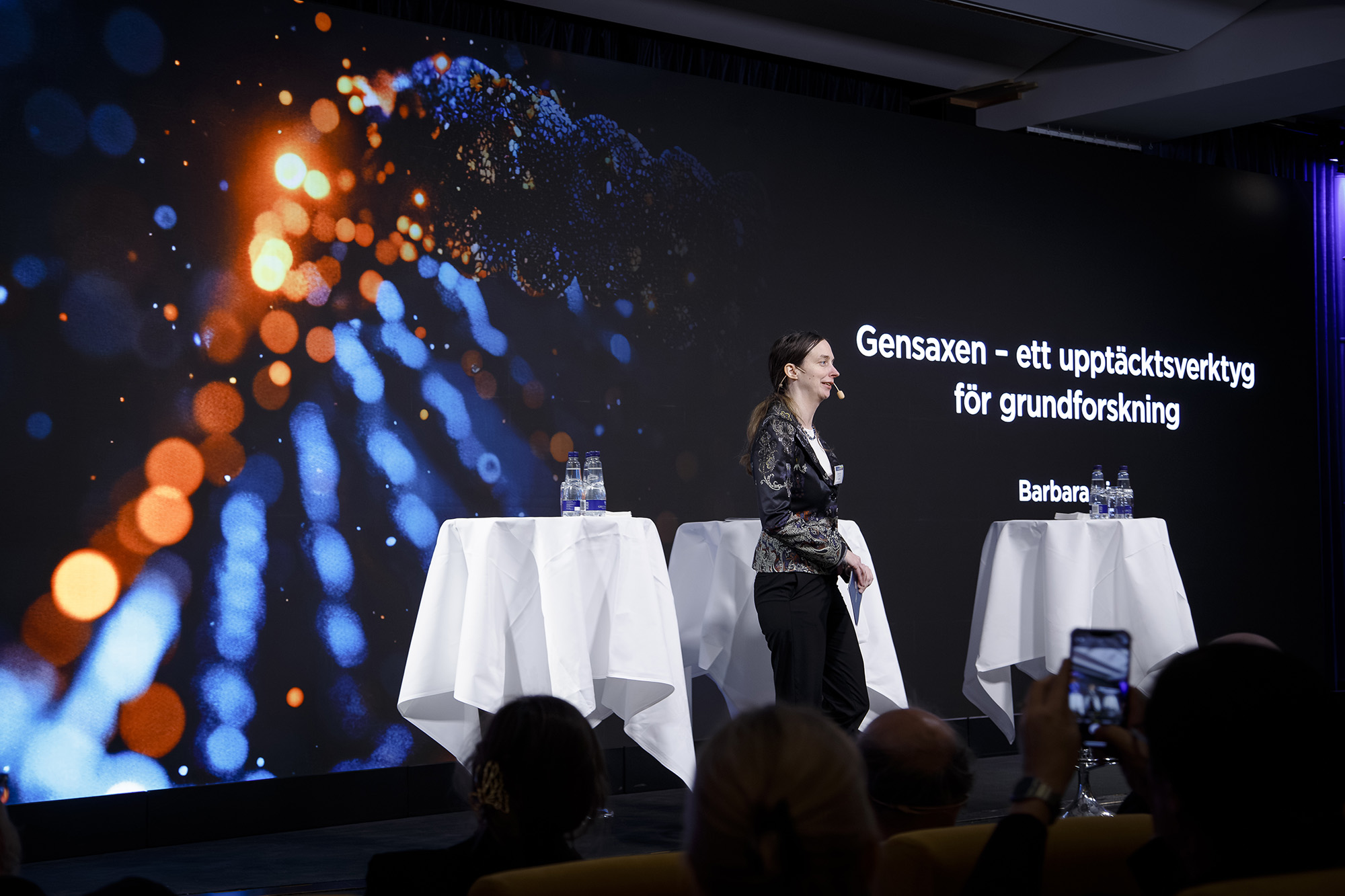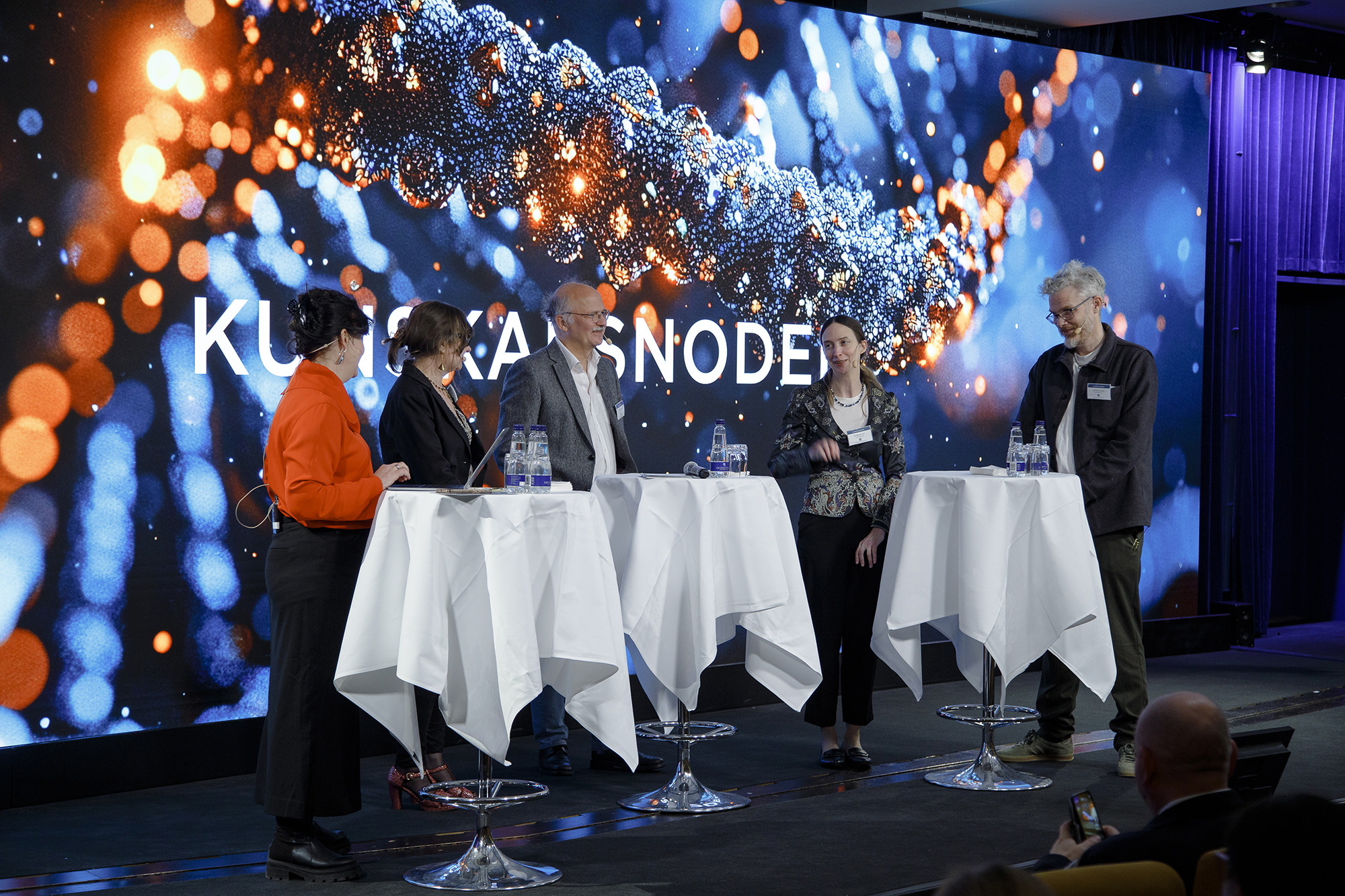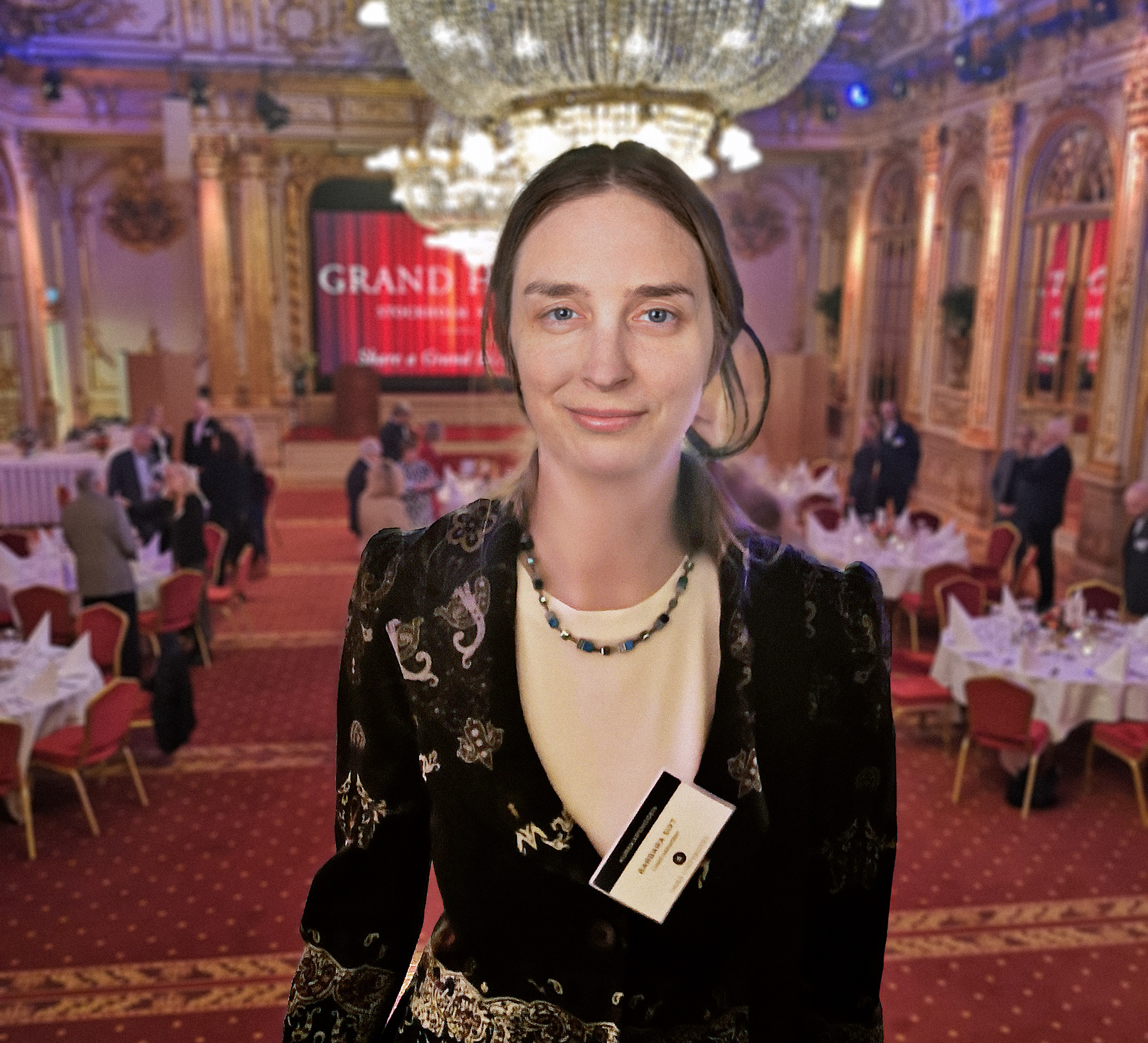
Barbara Sixt presenting at Kunskapsnoden. Photo: Johanna Fredriksson
“Kunskapsnoden? What is this? What does the word mean?” Those were my first thoughts when I was asked if I would be interested in participating in this year’s Kunskapsnoden.
It turned out that Kunskapsnoden is an important networking event that Umeå University organizes each year in the frame of the Västerbotten weeks at the Grand Hôtel in Stockholm. It is a meeting place for Umeå University officials and its external stakeholders and partners to share knowledge and to reflect on its impact on society. This year’s topic was (a bit freely translated from Swedish) “The gene scissors – opportunities and challenges”.
I was asked to present a part of my group’s research as an example of the application of the CRISPR-Cas9 tool, often described as gene scissors, in basic research. No problem. We use gene scissors routinely in the lab and indeed they have helped us to make key discoveries.
My group’s research focuses on the interplay between disease-causing bacteria and human cells. More specifically, we are interested in Chlamydia, a bacterium that causes sexually transmitted infections and an eye disease called trachoma. What is special about Chlamydia is that when this bacterium infects us, it invades our cells and then grows inside your cells. To do so, Chlamydia must evade our cells intrinsic defense mechanisms. Hence, if we could understand how it achieves this, maybe we can develop new treatments that boost our cells’ defenses or inactivate the pathogen’s countermeasures. This understanding is what we hope to gain with our research.
Gene scissors are an important component of our molecular toolbox. By allowing us to disable or modify individual genes in human cell cultures, they help us identify genes that play a key role in our cells’ defense strategies. Could we achieve this also without gene scissors? Likely yes, but it would definitely take us much more time and resources.
But now back to Kunskapsnoden. Of course, I said yes to the invitation and the great opportunity and honor to take part in this event. But just as the theme of the event indicates, no opportunities without challenges. “How good is your Swedish? Can you give the presentation in Swedish?”, I being a non-Swede originating from Austria was asked right after agreeing to participate.
Being a researcher, I of course love challenges. Consequently, “Sure, I can do this”, is what I responded. However, being a bit shy when it comes to practicing foreign languages, I must admit that it was a quite big personal challenge for me to step on the stage and speak in Swedish, also considering the importance of the event and the audience. I needed many hours of preparation and am deeply grateful to my colleagues for their help and feedback. Was the final product perfect in terms of Swedish language? Most likely not. Was it worth it? Definitely! It was an amazing event and atmosphere!

The panel talk with Barbara Sixt, Björn Pilebro, Stefan Jansson, and Madeleine Hayenhjelm was moderated by Anna-Karin Nyberg. Photo: Johanna Fredriksson
So, what were the questions from the audience in the following panel discussion? They were very diverse: Does it feel inspiring that Novel prize laureate Emmanuelle Charpentier has worked on the gene scissors at Umeå University? How do we cover gene scissors in education? Do we take enough time to consider the ethical implications surrounding the application of the gene scissors? What channels can we use to reach out and foster a dialogue with society? How can we support multidisciplinary research in a better way? What do we need to make more discoveries as ground-breaking as the discovery of the gene scissors?
The latter is a question that I believe we researchers think about often. Of course, the research environment needs to be enabling. But I also think that the story of the gene scissors shows nicely that the ground-breaking nature of one’s finding may not always (maybe even never) be evident beforehand. So maybe we need less meticulous planning but more curiosity in research? A big portion of luck does not hurt either, I guess.

“It was an amazing event and atmosphere!”

